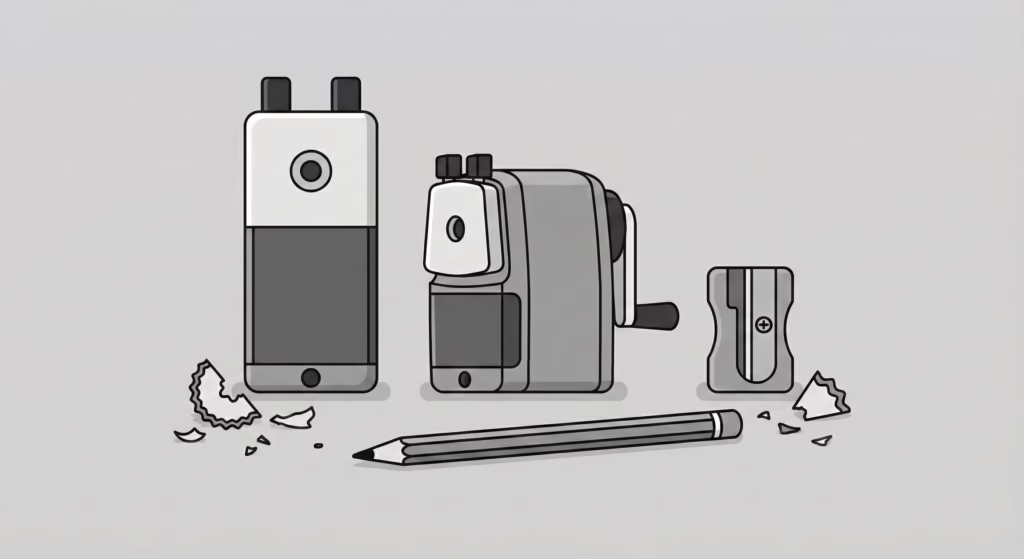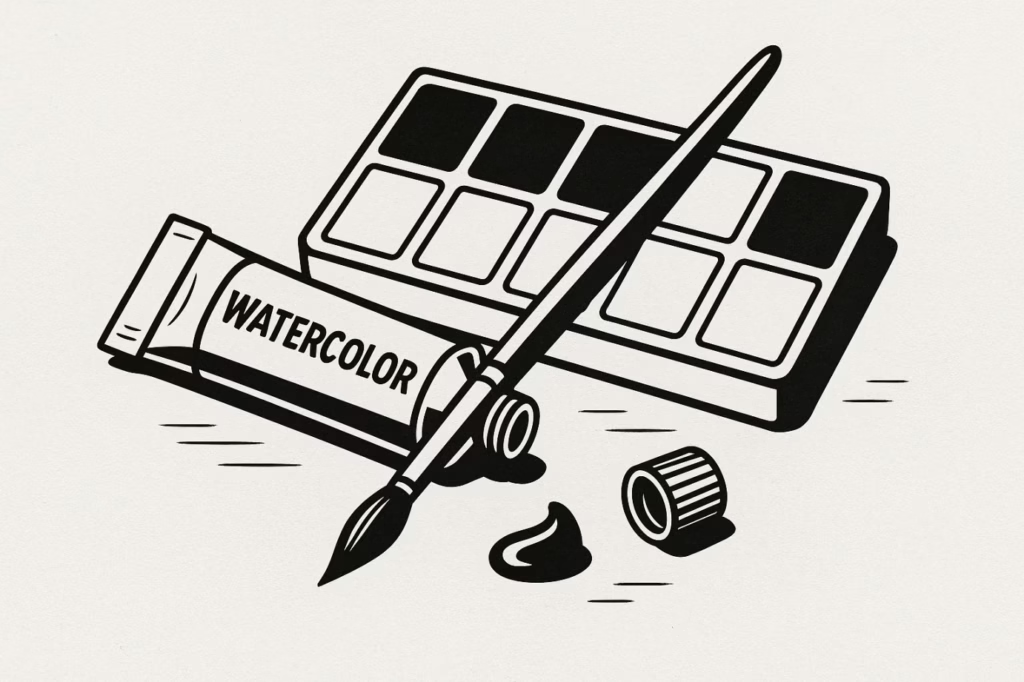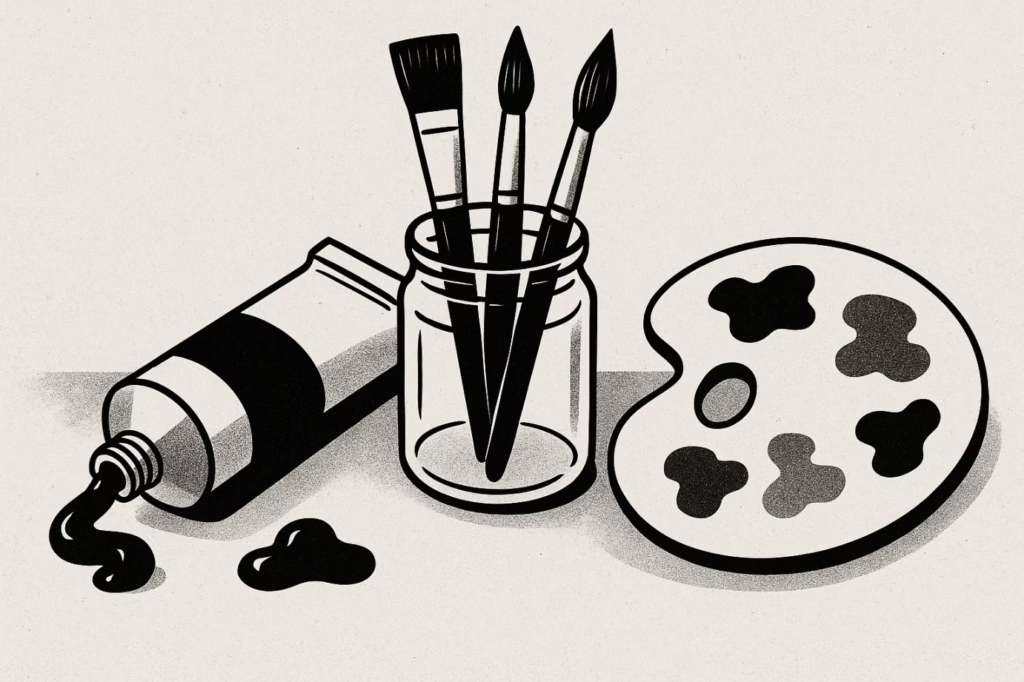Table of Contents
Master the foundation of professional charcoal art through expert paper selection
Quick Answer: The best paper for charcoal drawing combines proper surface texture (“tooth”), archival quality, and appropriate weight for your technique. For professionals, Canson Mi-Teintes excels for versatility, Strathmore 500 Series for traditional work, and Legion Stonehenge for contemporary approaches.
Finding the best paper for charcoal drawing is crucial for professional artists seeking gallery-quality results. The best paper for charcoal drawing provides the perfect balance of surface texture, durability, and archival properties that transform amateur sketches into professional masterpieces. Unlike other drawing mediums, charcoal demands specific paper characteristics to achieve its full expressive potential.
This comprehensive guide examines the 8 best papers for charcoal drawing used by professional artists worldwide. Whether you’re creating portrait commissions, preparing for gallery exhibitions, or developing your professional portfolio, selecting the best paper for charcoal drawing will elevate your artistic practice.
What Makes the Best Paper for Charcoal Drawing
Understanding what constitutes the best paper for charcoal drawing requires analyzing how this unique medium interacts with paper surfaces. Professional charcoal artists evaluate papers based on specific technical and artistic criteria.
Surface Texture: The Foundation of Great Charcoal Work
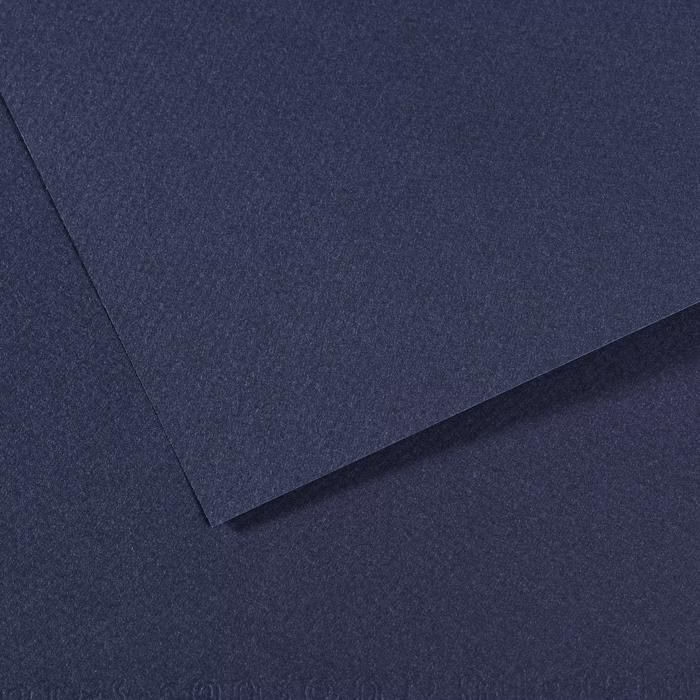
The best paper for charcoal drawing must have appropriate “tooth”—the microscopic texture that grips charcoal particles. Smooth papers like copy paper cannot hold charcoal effectively, while overly rough surfaces can dominate your artistic expression.
Optimal Tooth Characteristics:
- Light to medium texture for controlled application
- Consistent grain pattern for predictable results
- Balanced roughness that grips without overwhelming
- Even surface distribution across the entire sheet
Archival Quality: Professional Longevity Standards
The best paper for charcoal drawing must meet museum-quality archival standards for professional applications:
- Acid-free composition prevents yellowing and deterioration
- Neutral pH levels ensure long-term stability
- Buffered alkaline reserve protects against environmental damage
- Lightfast properties maintain appearance under gallery lighting
Weight and Durability Considerations
Professional charcoal techniques demand papers that withstand aggressive mark-making:
- Medium to heavy weight (90-300 gsm) for dimensional stability
- Cotton fiber content provides superior durability
- Quality surface sizing allows for erasing and reworking
- Tear resistance supports vigorous blending techniques
Best Paper for Charcoal Drawing: Professional Selection Criteria
When evaluating the best paper for charcoal drawing for professional use, consider these essential factors that separate amateur from professional-grade surfaces.
Technique Compatibility
The best paper for charcoal drawing varies by artistic approach:
For Realistic Detail Work:
- Smooth to medium surfaces enable precise control
- Higher cotton content supports multiple layers
- Consistent texture prevents unwanted artifacts
For Expressive Gestural Work:
- More pronounced texture adds natural character
- Heavier weight withstands aggressive techniques
- Larger format options accommodate bold compositions
For Mixed Media Applications:
- Compatible surface sizing accepts wet media
- Appropriate absorbency prevents buckling
- Chemical stability with various art materials
Professional Presentation Requirements
The best paper for charcoal drawing for professional artists must photograph and frame beautifully:
- Color neutrality for accurate reproduction
- Surface consistency for even lighting in photographs
- Standard sizing compatible with professional matting
- Edge quality that presents cleanly when exhibited
Top 8 Best Papers for Charcoal Drawing
After extensive testing and professional application, these eight papers represent the best options for serious charcoal artists. Each offers unique characteristics that make it the best paper for charcoal drawing in specific applications.
1. Canson Mi-Teintes: The Versatile Professional Choice
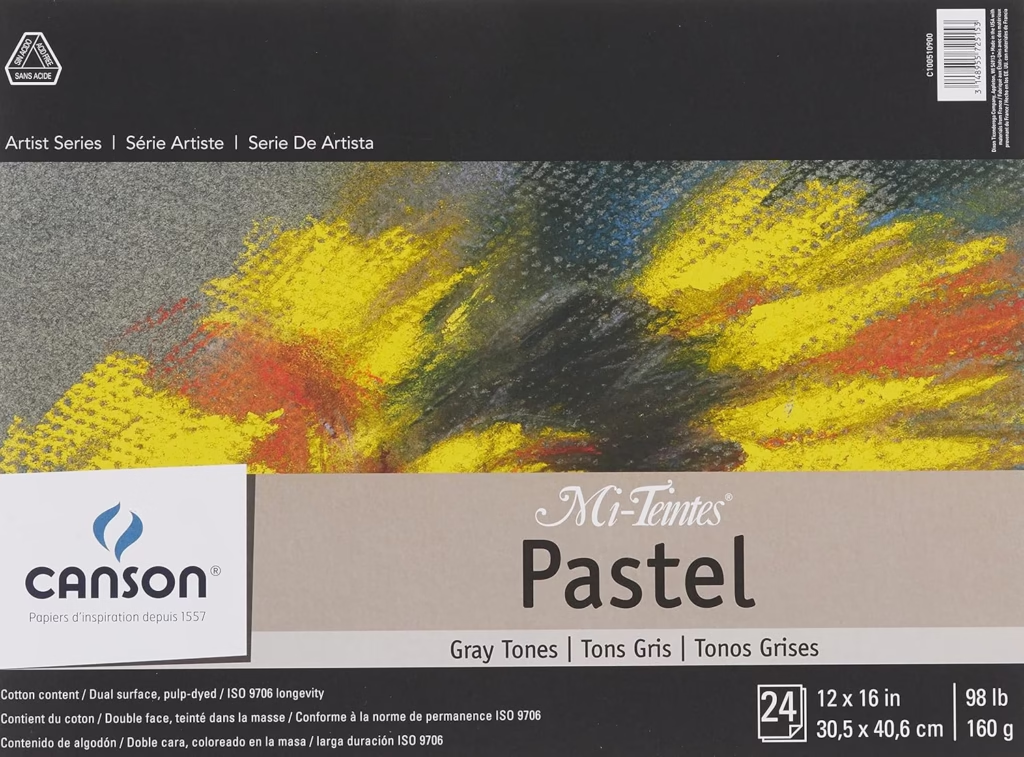
Why It’s Among the Best Papers for Charcoal Drawing:
Canson Mi-Teintes consistently ranks as one of the best papers for charcoal drawing due to its innovative dual-surface design and extensive color range. This French-manufactured paper has earned its reputation through decades of professional use.
Technical Specifications:
- Weight: 160 gsm (98 lb)
- Composition: 75% cotton, 25% high-quality cellulose
- pH: Neutral, acid-free, buffered
- Available in 50 colors plus white
- Surface: Honeycomb texture (front) and fine grain (reverse)
Professional Applications:
The dual-surface construction makes this one of the best papers for charcoal drawing across multiple techniques. The fine grain reverse side provides controlled charcoal application ideal for portrait work, while the honeycomb front surface offers aggressive tooth for gestural approaches.
Color Strategy for Professional Work:
Moonstone (354): Warm neutral gray perfect for skin tones

Steel Gray (431): Cool contemporary neutral for modern work
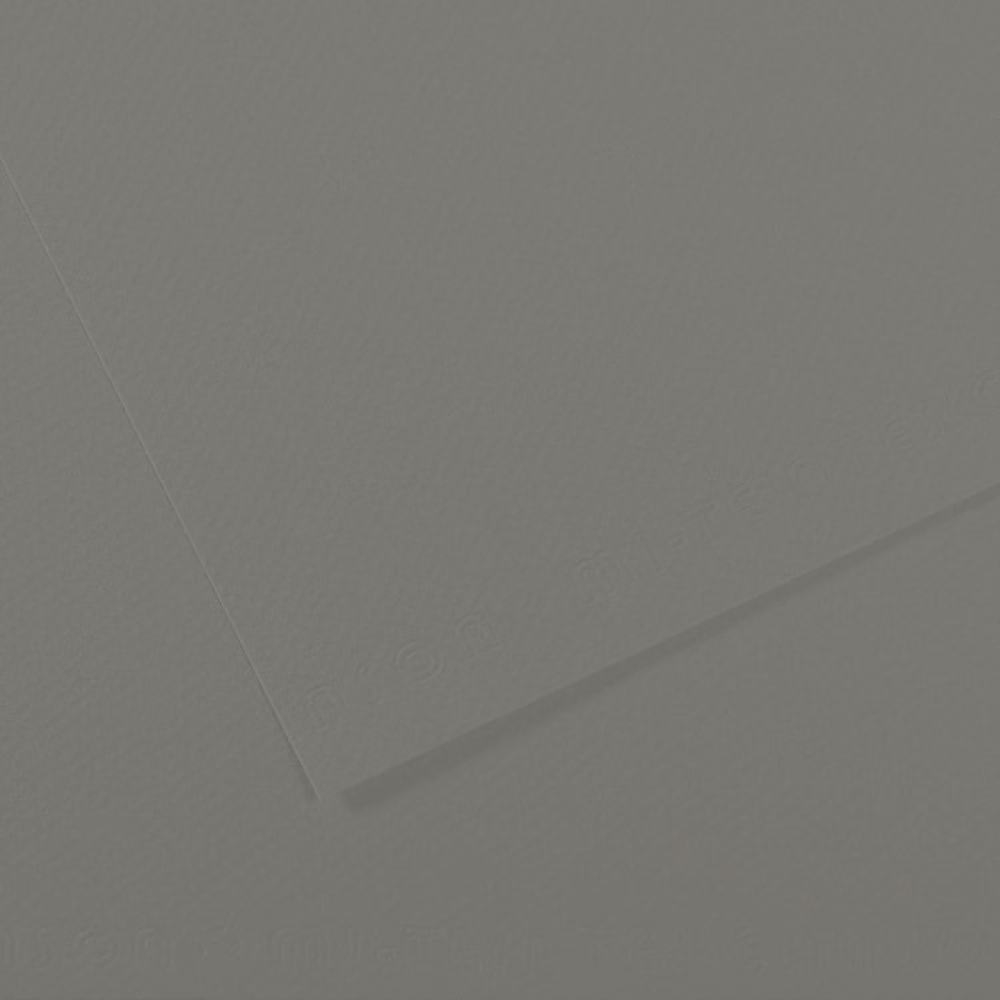
Pearl (429): Subtle warm undertone for classical approaches
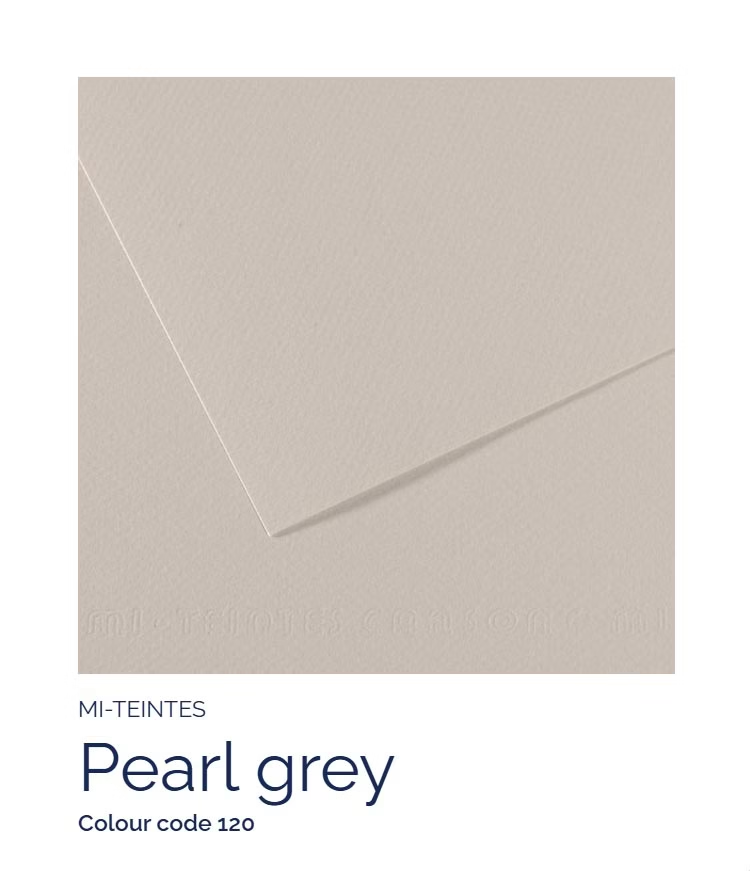
White: Maximum contrast for dramatic compositions
Professional Advantages:
- Extensive color palette supports diverse artistic visions
- Dual surfaces provide two drawing experiences per sheet
- High cotton content ensures archival stability
- Moderate pricing allows for regular professional use
Considerations:
- Moderate charcoal capacity requires strategic layer management
- Texture can dominate in highly detailed realistic work
- Color consistency may vary between production batches
2. Strathmore 500 Series: The Heritage Professional Standard
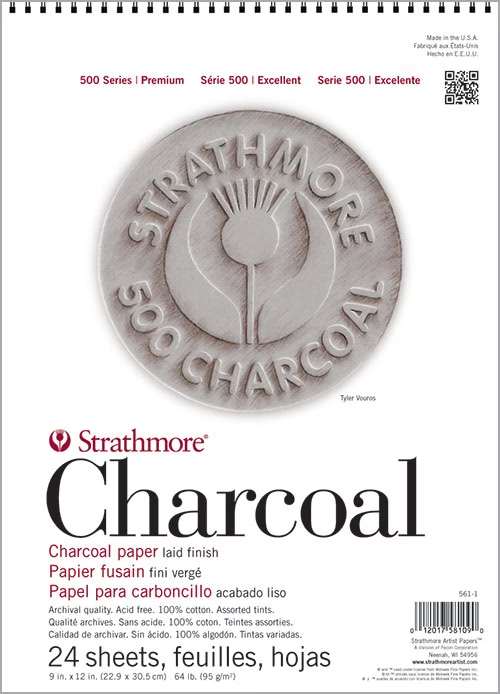
Why It’s One of the Best Papers for Charcoal Drawing:
For over 110 years, Strathmore 500 Series has been considered among the best papers for charcoal drawing by American art institutions. This traditional laid paper provides the most predictable and teachable charcoal surface available.
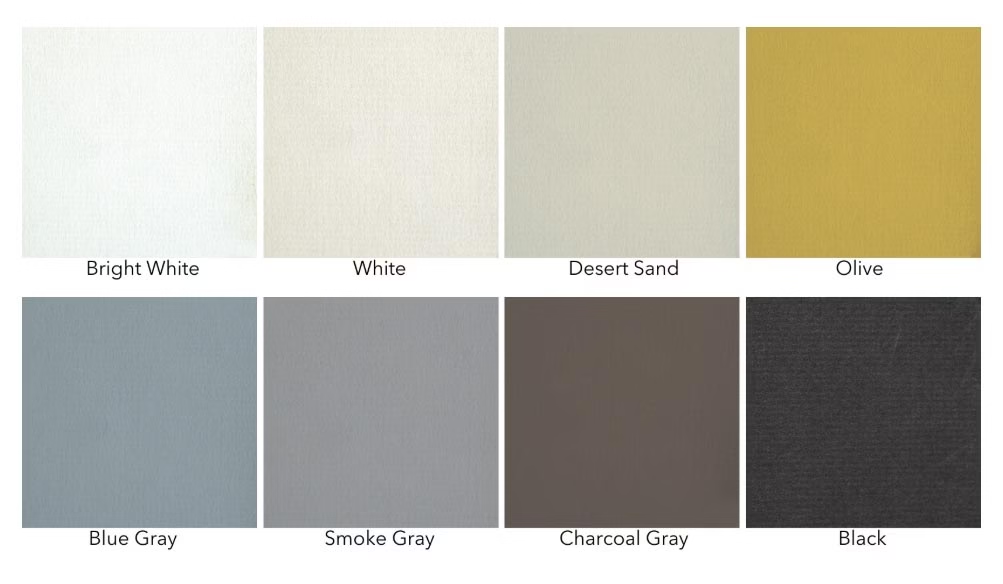
Technical Specifications:
- Weight: 95 gsm (64 lb)
- Composition: 100% cotton fiber
- Surface: Traditional laid finish
- Colors: Natural white, assorted toned options
- pH: Neutral, fully archival
Professional Heritage:
This paper’s century-plus history makes it the best paper for charcoal drawing for artists connecting with traditional American art education. The laid pattern—created by wire mesh during manufacturing—provides consistent ridges and valleys that grip charcoal uniformly.
Professional Applications:
- Academic drawing instruction and demonstration
- Classical figure study approaches
- Commercial illustration requiring reliable reproduction
- Portfolio development with time-tested foundations
Technical Excellence:
- Unmatched consistency across sheets and production runs
- Excellent erasability for precision corrections
- Cost-effective for high-volume professional practice
- Proven archival stability through decades of use
Professional Limitations:
- Limited color options compared to contemporary alternatives
- Traditional texture may appear dated in modern gallery contexts
- Lighter weight requires careful handling in large formats
3. Fabriano Tiziano: Italian Excellence for Professional Artists
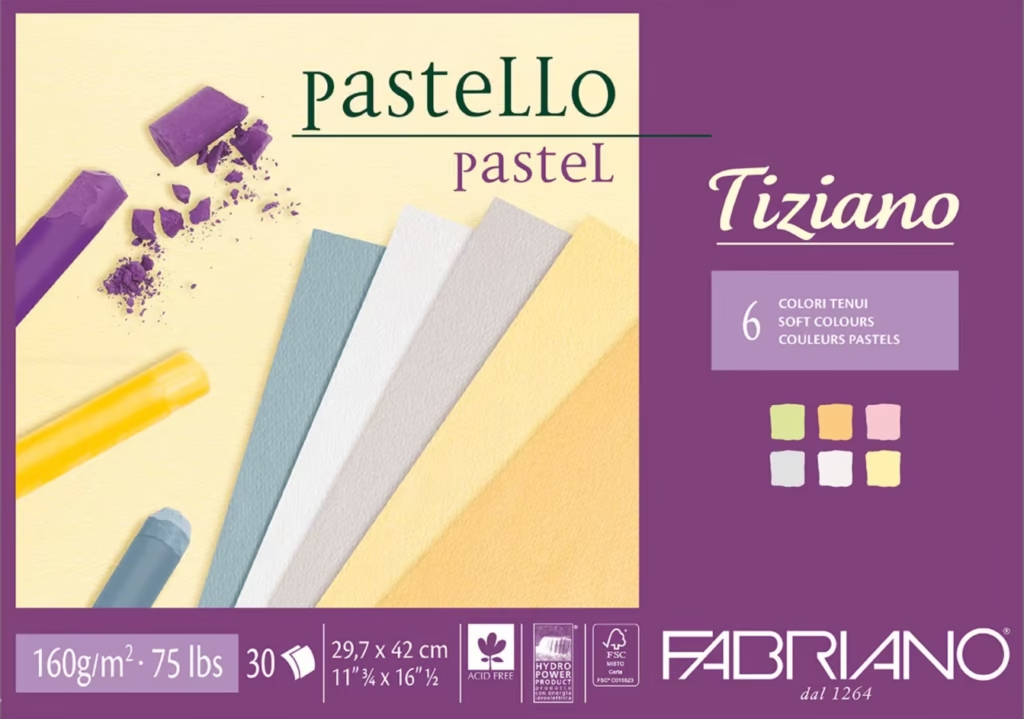
Why It Ranks Among the Best Papers for Charcoal Drawing:
From Italy’s most prestigious paper mill comes this sophisticated surface that many consider the best paper for charcoal drawing for gallery-quality work. Fabriano’s 750-year papermaking heritage shows in every sheet.
Technical Specifications:
- Weight: 160 gsm (98 lb)
- Composition: 40% cotton, 60% cellulose
- Surface: Light grain texture
- Available in 32 sophisticated colors
- Manufacturing: Traditional Italian methods
Professional Surface Characteristics:
The light grain texture strikes an optimal balance that makes this among the best papers for charcoal drawing for detailed work. Enough tooth to grip charcoal securely while remaining smooth enough for precise applications.
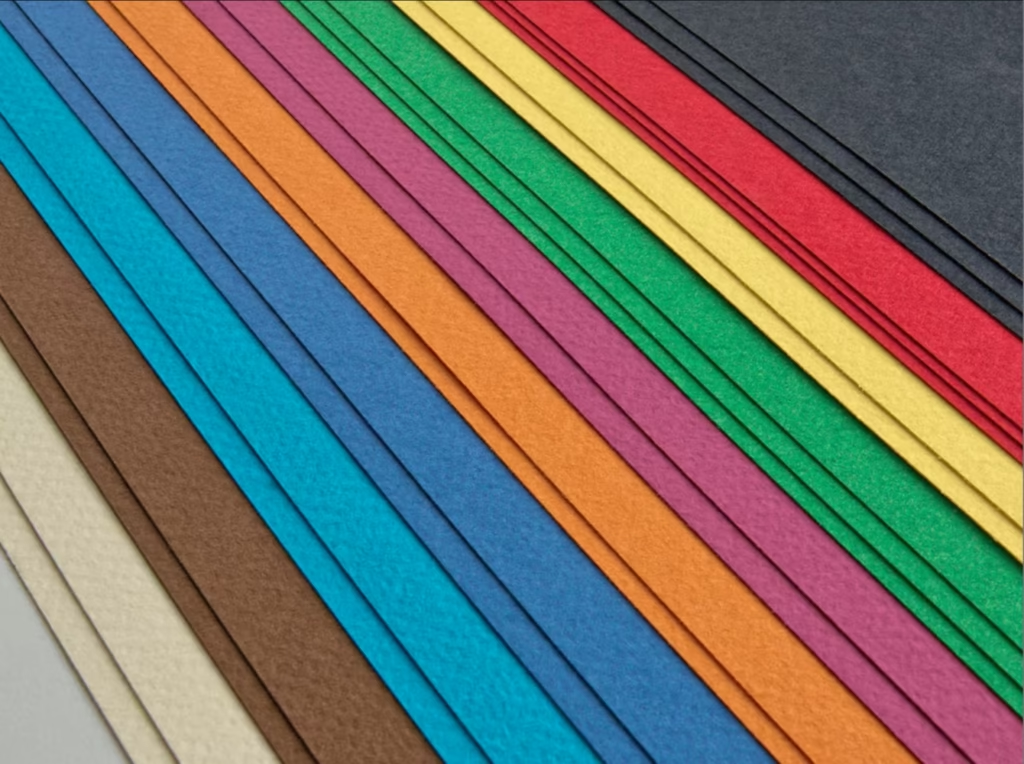
Color Sophistication: Tiziano’s palette reflects Italian aesthetic sensibilities with colors that complement rather than compete:
Sahara (21): Warm cream base for classical studies
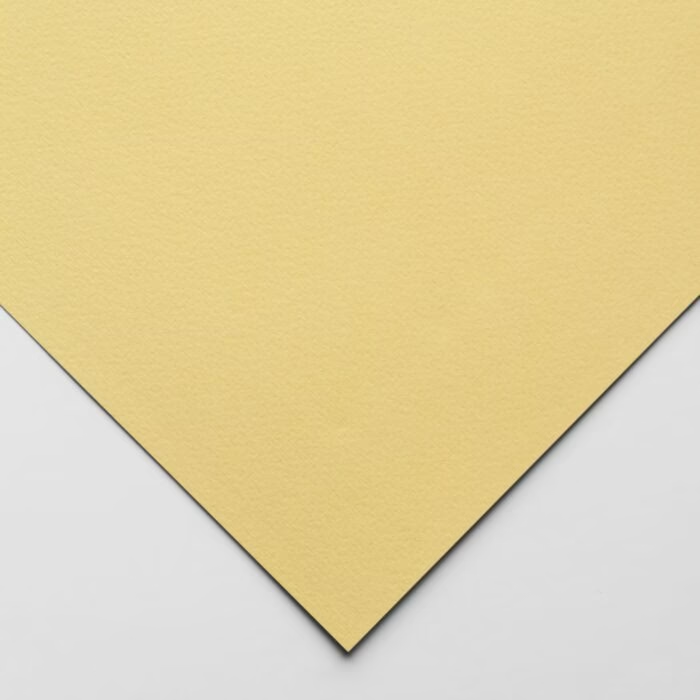
Nebbia (15): Cool gray-blue for contemporary work

Terra di Sienna (17): Rich earth tone for warm compositions
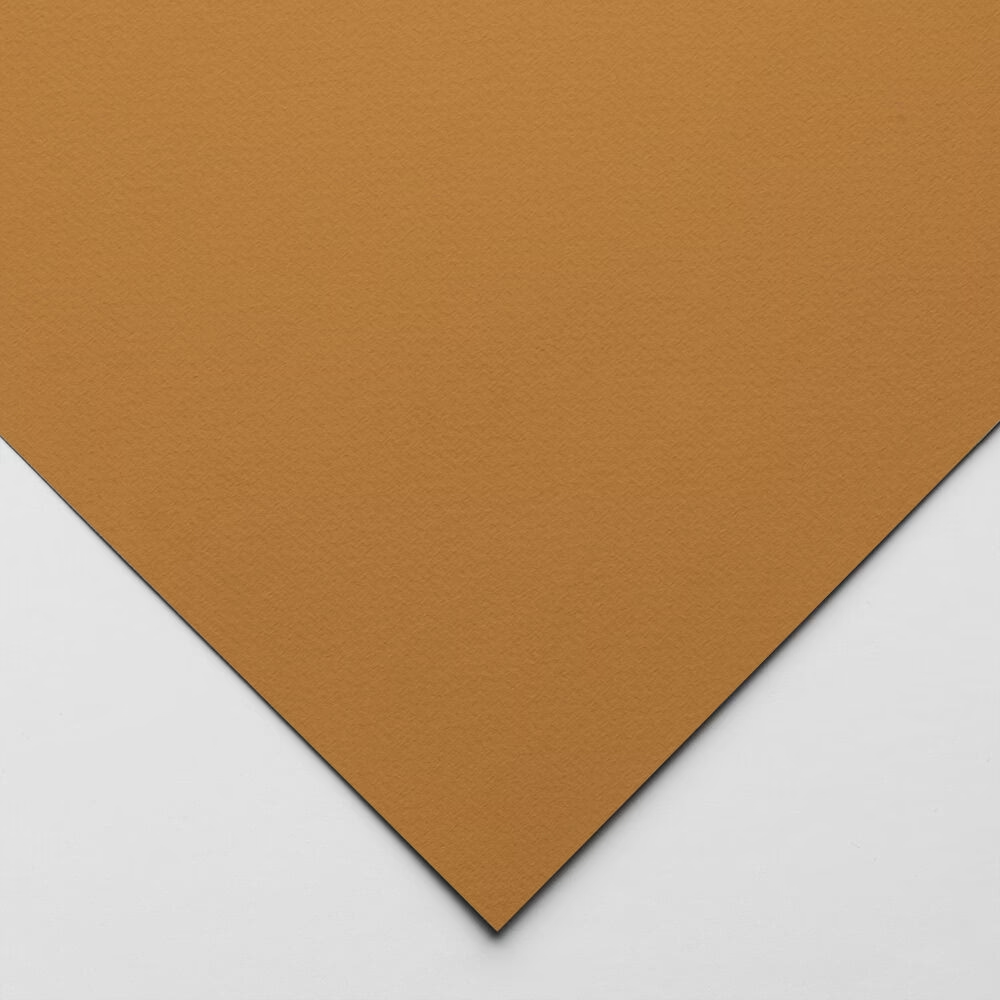
Professional Applications:
- Fine art gallery exhibitions requiring sophisticated foundations
- Mixed media pieces combining charcoal with watercolor techniques
- Portrait commissions benefiting from warm, natural paper tones
- Contemporary drawing practices requiring modern aesthetic foundations
Investment Considerations:
- Higher cost per sheet requires strategic project selection
- Limited availability through specialty art suppliers only
- Superior wet media compatibility for advanced mixed techniques
4. Legion Stonehenge: The Contemporary Professional Choice
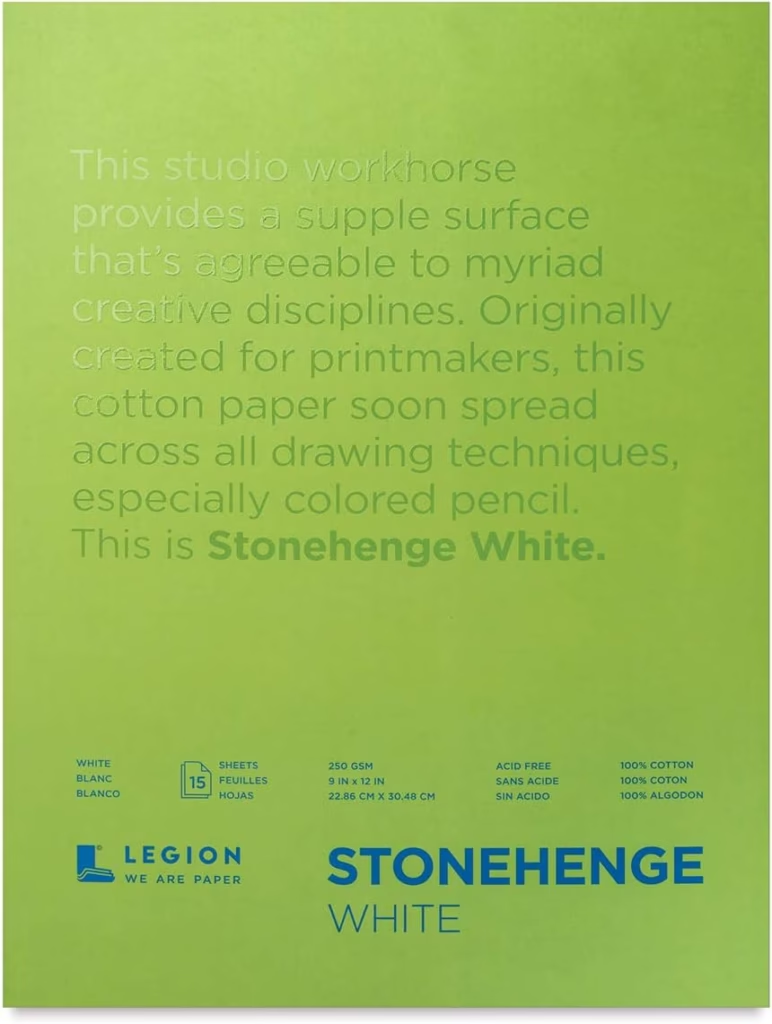
Why Professionals Consider It Among the Best Papers for Charcoal Drawing:
Originally developed for printmaking, Stonehenge has become one of the best papers for charcoal drawing for artists seeking contemporary aesthetic approaches. Its unique surface characteristics offer alternatives to traditional charcoal papers.
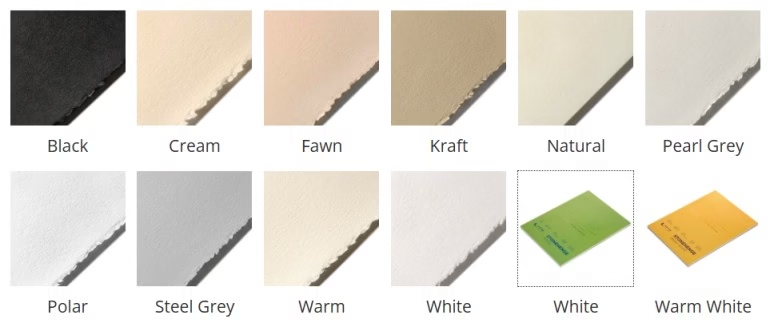
Technical Specifications:
- Weight: 250 gsm (90 lb) or 320 gsm (140 lb)
- Composition: 100% cotton
- Surface: Smooth with subtle mottled texture
- Available in white plus 8 contemporary colors
- Manufacturing: American-made since 1974
Surface Innovation:
The smooth, vellum-like surface with subtle mottling provides what many professionals consider the best paper for charcoal drawing for contemporary approaches. The heavy weight and cotton construction create exceptional dimensional stability.
Professional Applications:
- Photorealistic charcoal rendering requiring smooth surfaces
- Large-scale works needing maximum dimensional stability
- Mixed media foundations accepting watercolor, acrylic, and dry media
- Contemporary drawing practices emphasizing clean, modern aesthetics
Technical Advantages:
- Unparalleled surface durability for aggressive reworking
- Excellent photographic reproduction for portfolio documentation
- Premium cotton construction ensures museum-quality longevity
- Unique aesthetic differentiates work in competitive markets
Professional Adaptation:
- Smooth surface requires technique adjustment for traditional charcoal artists
- Higher investment cost demands selective application
- Limited color range compared to traditional charcoal papers
5. Fabriano Artistico Hot Pressed: Premium Smooth Excellence
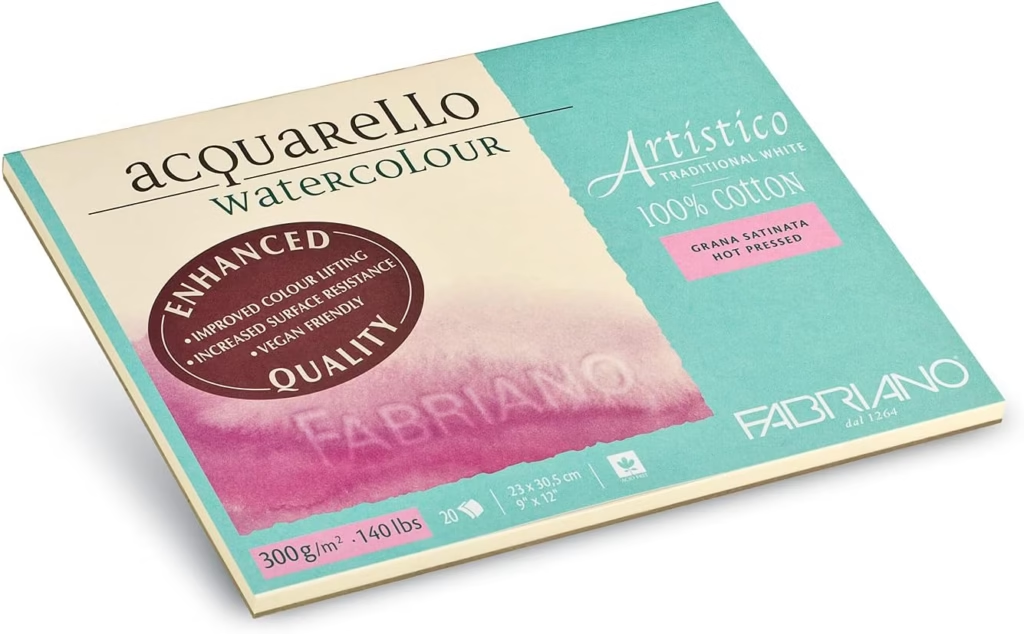
Why It’s Considered the Best Paper for Charcoal Drawing for Detail Work:
While designed for watercolor, this premium Italian paper offers charcoal artists what many consider the best paper for charcoal drawing for hyperrealistic work requiring smooth surfaces with exceptional archival properties.
Technical Specifications:
- Weight: 300 gsm (140 lb) or 640 gsm (300 lb)
- Composition: 100% cotton
- Surface: Hot pressed (smooth)
- Color: Bright white only
- Quality: Museum-grade archival standards
Professional Surface Excellence:
The hot-pressed surface provides controlled charcoal application while maintaining enough subtle tooth for secure adhesion. Heavy sizing allows for mixed media applications without dimensional instability.
Professional Applications:
- Hyperrealistic charcoal work requiring maximum surface control
- Mixed media pieces combining charcoal with watercolor techniques
- Large format works needing absolute dimensional stability
- Fine art applications requiring uncompromising archival standards
Investment Quality:
- Museum-quality archival properties for collector appeal
- Exceptional surface durability supports detailed reworking
- Bright white base maximizes contrast potential
- Compatible with both wet and dry media combinations
6. Hahnemühle Ingres: German Precision for Traditional Excellence
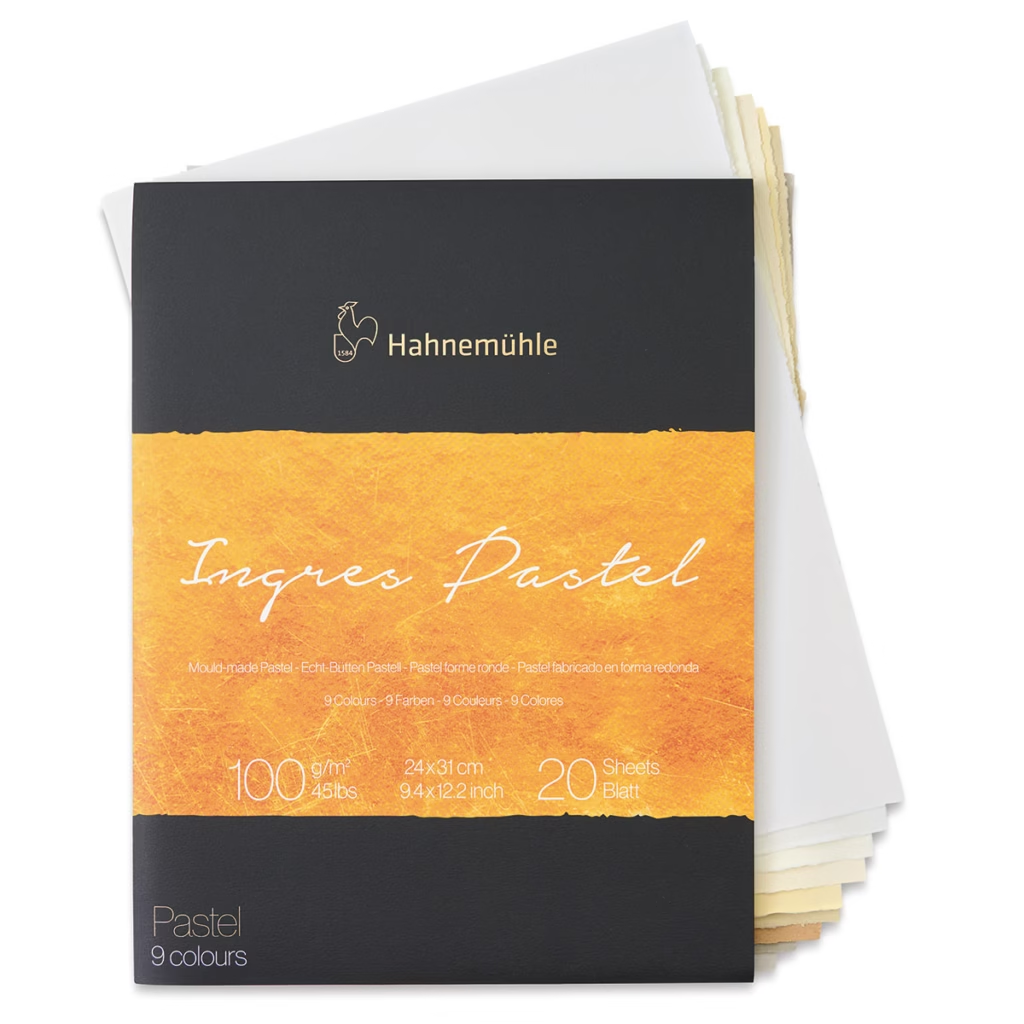
Why Traditional Artists Choose It as the Best Paper for Charcoal Drawing:
From Germany’s premier art paper manufacturer comes this traditional laid paper that honors classical drawing practices while meeting contemporary archival standards, making it the best paper for charcoal drawing for historical technique applications.
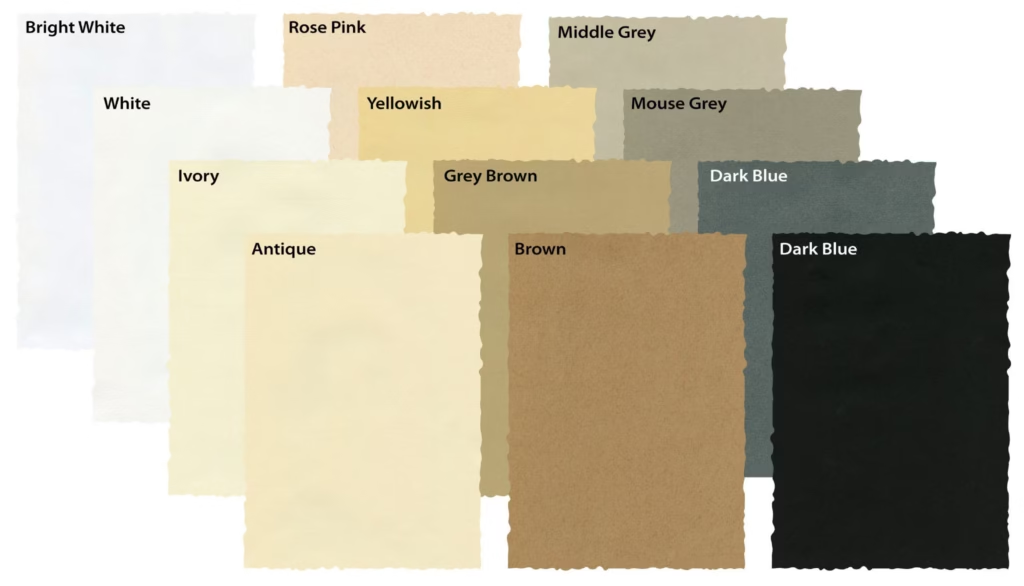
Technical Specifications:
- Weight: 100 gsm (65 lb)
- Composition: 100% alpha cellulose with 25% cotton
- Surface: Laid texture with distinct ribbing
- Available in 10 classical colors
- Manufacturing: Traditional German methods
Traditional Surface Character:
The pronounced laid lines create the classic texture associated with Old Master drawings, providing both historical authenticity and practical charcoal grip that makes this the best paper for charcoal drawing for classical approaches.
Professional Applications:
- Classical academic drawing instruction and practice
- Historical technique study and recreation projects
- Fine art applications requiring traditional aesthetic foundations
- Educational contexts teaching historical drawing methods
Heritage Quality:
- Authentic historical surface texture connects to artistic tradition
- Premium German manufacturing ensures consistent quality
- Excellent charcoal retention and blending control
- Archival properties meet contemporary museum standards
7. Arches Watercolor Paper (Cold Press): The Mixed Media Champion
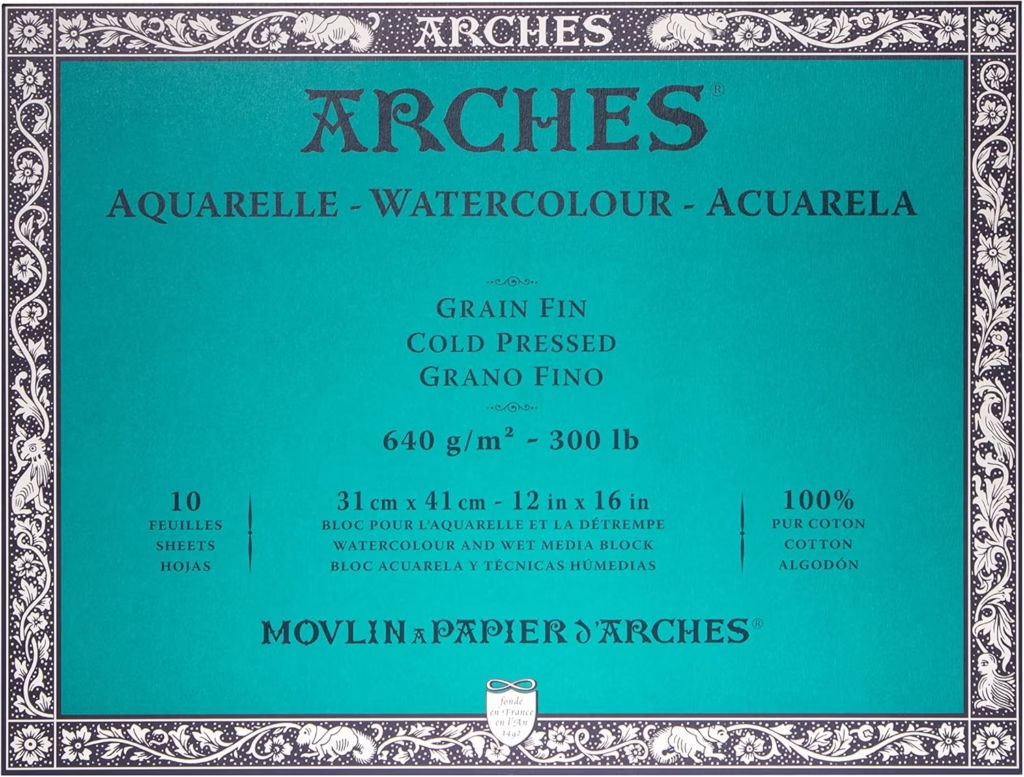
Why It’s Among the Best Papers for Charcoal Drawing for Mixed Media:
This legendary French watercolor paper provides charcoal artists with what many consider the best paper for charcoal drawing when mixed media techniques are involved, offering uncompromising quality and unlimited creative possibilities.
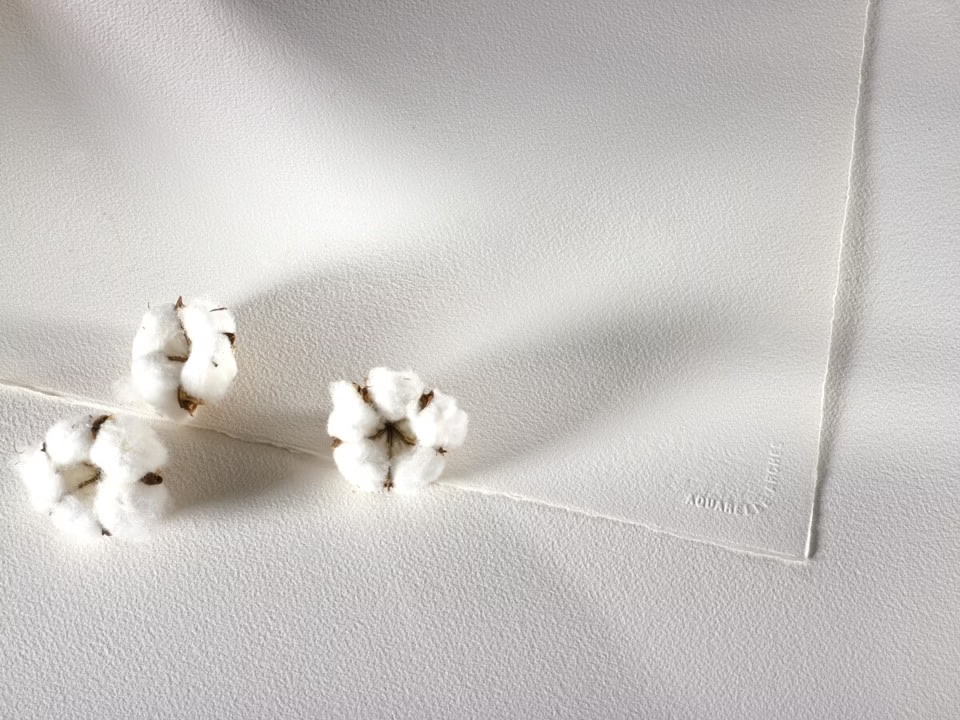
Technical Specifications:
- Weight: 300 gsm (140 lb), 640 gsm (300 lb)
- Composition: 100% cotton
- Surface: Cold pressed (medium texture)
- Color: Bright white
- Heritage: Traditional French papermaking excellence
Surface Dynamics for Professional Use:
The cold-pressed texture offers substantial tooth for secure charcoal grip while maintaining the refined character expected in fine art applications. Premium sizing allows for diverse technique combinations that make this the best paper for charcoal drawing for experimental approaches.
Professional Applications:
- Mixed media masterworks combining charcoal with watercolor
- Large-scale projects requiring absolute dimensional stability
- Fine art applications demanding uncompromising archival quality
- Contemporary practices exploring traditional/modern technique fusion
Premium Investment:
- Legendary French papermaking quality ensures consistent performance
- Exceptional wet media compatibility opens creative possibilities
- Superior archival properties appropriate for investment artwork
- Maximum creative flexibility for experimental professional approaches
8. Strathmore 300 Series: The Professional Practice Standard
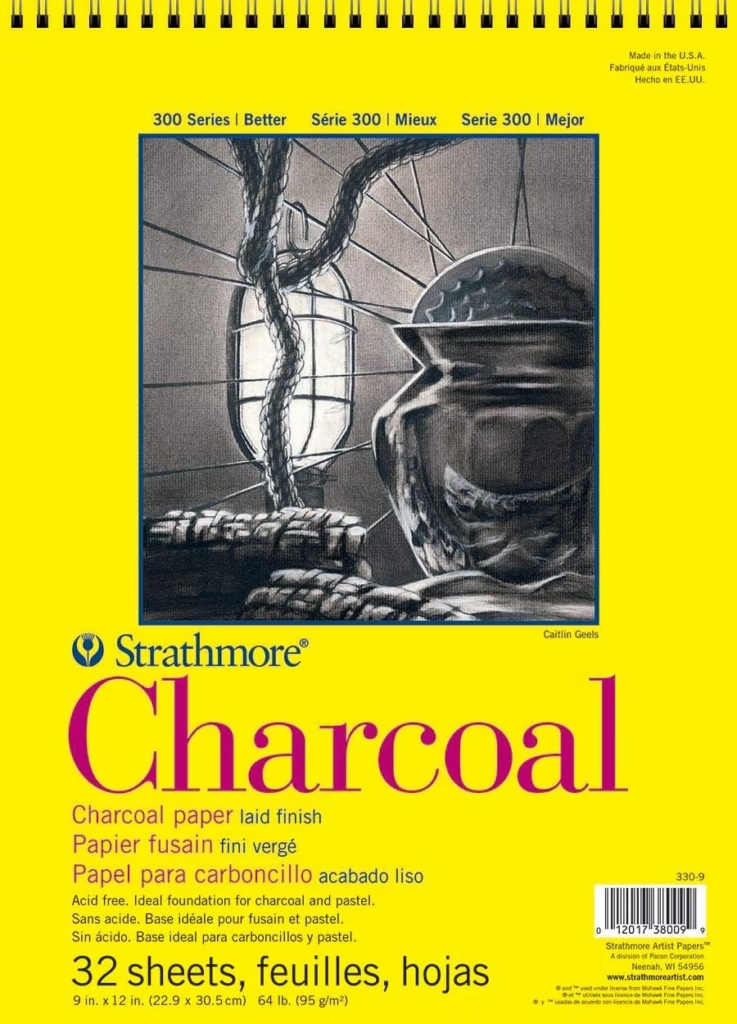
Why Professionals Include It Among the Best Papers for Charcoal Drawing:
While positioned as student-grade, the 300 Series serves crucial roles in professional practice, making it one of the best papers for charcoal drawing for development work, client presentations, and high-volume applications.
Technical Specifications:
- Weight: 95 gsm (64 lb)
- Composition: Wood pulp with cotton content
- Surface: Traditional laid finish
- Color: Natural white
- Value: Exceptional cost-to-performance ratio
Professional Practice Applications:
This economical surface provides reliable charcoal performance at a fraction of premium paper costs, making it the best paper for charcoal drawing for professional practices requiring high sheet volumes.
Strategic Professional Uses:
- Sketch development and composition planning phases
- Client presentation drawings and concept work
- Teaching and workshop demonstration applications
- High-volume commercial illustration projects
Practical Professional Value:
- Exceptional value supports efficient professional workflow
- Consistent performance enables predictable results
- Wide availability ensures reliable supply chain
- Adequate archival properties for most commercial applications
Best Paper for Charcoal Drawing: Professional Selection Matrix
Choosing the best paper for charcoal drawing depends on your specific professional applications. This selection matrix helps identify the optimal paper for different artistic approaches.
For Portrait and Figure Work
Primary Choice: Canson Mi-Teintes (Moonstone, Pearl tones) The dual surface design and warm color options make this the best paper for charcoal drawing for professional portrait work.
Secondary Option: Fabriano Tiziano (Sahara, Nebbia) Sophisticated color palette and smooth texture excel for commissioned portrait work.
Contemporary Approach: Legion Stonehenge Smooth surface enables photorealistic detail work in modern portrait styles.
For Landscape and Atmospheric Work
Traditional Approach: Canson Mi-Teintes (Steel Gray, Flannel Gray) Toned bases provide natural atmospheric foundations for landscape compositions.
Mixed Media Integration: Arches Watercolor Paper Cold Press Exceptional wet media compatibility for charcoal/watercolor landscape combinations.
Development Work: Strathmore 300 Series Cost-effective for plein air studies and composition development.
For Detailed Realistic Work
Contemporary Realism: Legion Stonehenge Smooth surface with subtle tooth enables precise photorealistic rendering.
Classical Realism: Fabriano Artistico Hot Pressed Premium smooth surface for maximum detail control in traditional approaches.
Historical Techniques: Hahnemühle Ingres Traditional laid texture connects realistic work to classical drawing methods.
For Mixed Media Integration
Professional Mixed Media: Arches Watercolor Paper Superior wet media compatibility for advanced charcoal/watercolor combinations.
Moderate Mixed Media: Fabriano Artistico Hot Pressed Excellent surface sizing handles light watercolor washes over charcoal.
Experimental Approaches: Fabriano Tiziano Balanced surface accepts various media while maintaining charcoal performance.
Advanced Professional Techniques by Paper Type
Maximizing the potential of each paper requires understanding their unique characteristics and adapting your technique accordingly. These advanced approaches help you get the best performance from each surface.
Mastering Canson Mi-Teintes: The Dual-Surface Strategy
Surface Selection Strategy:
- Fine grain side: Use for initial drawing development, detailed work, and controlled blending
- Honeycomb side: Reserve for final expressive passages, texture effects, and gestural elements
Color Integration Techniques:
- Select paper colors that enhance rather than neutralize your charcoal palette
- Use warm tones (Moonstone, Pearl) for portraits to complement skin colors
- Choose cool grays (Steel Gray) for contemporary subjects and urban scenes
Layer Management:
- Apply workable fixative between major development phases
- Build gradually as surface fills more readily than premium papers
- Plan your darkest values carefully as the surface has limited capacity
Optimizing Strathmore 500 Series: Traditional Excellence
Embracing the Laid Pattern:
- Allow the traditional texture to contribute to your artistic expression
- Use cross-hatching techniques that work with the laid pattern
- Plan highlight placement to utilize the natural texture rhythm
Erasing Strategies:
- Take advantage of excellent erasability for precision corrections
- Use kneaded erasers to lift charcoal along the laid pattern
- Plan subtractive techniques that exploit the paper’s forgiving nature
Building Professional Consistency:
- Develop standard techniques that work reliably on this surface
- Create consistent results for series work and commissions
- Use the paper’s predictability for teaching and demonstration
Professional Legion Stonehenge Techniques
Pressure Variation Control:
- Start with extremely light touch as surface fills more readily
- Gradually increase pressure for deeper blacks
- Use the smooth surface for precise edge control
Layering Strategy for Smooth Surfaces:
- Build more gradually than on traditional papers
- Plan your value structure carefully before beginning
- Use the exceptional layering capacity for rich, complex drawings
Mixed Media Integration:
- Exploit watercolor compatibility for innovative underpainting
- Combine charcoal with colored pencil for contemporary approaches
- Use the stable surface for experimental technique development
Professional Paper Care and Investment Strategy
Protecting your investment in premium papers and maintaining consistent quality requires professional-level care and strategic purchasing approaches.
Archival Storage Standards
Environmental Control:
- Maintain consistent temperature (65-70°F) and humidity (45-55%)
- Use acid-free storage materials throughout
- Protect from direct light exposure during storage
- Ensure adequate air circulation to prevent moisture buildup
Physical Protection:
- Store papers flat in museum-quality storage boxes
- Use acid-free interleaving between sheets
- Handle papers with clean, dry hands only
- Support large sheets properly during transportation
Inventory Management:
- Rotate stock to use older papers first
- Document storage conditions and dates
- Inspect papers regularly for signs of deterioration
- Maintain consistent suppliers for color matching
Professional Investment Strategy
Building Your Paper Arsenal ($400-700 initial investment):
Essential Professional Kit:
- Canson Mi-Teintes: 10 sheets each in Moonstone, Steel Gray, White
- Strathmore 500 Series: 15 sheets white for traditional applications
- Legion Stonehenge: 8 sheets white for contemporary projects
- Strathmore 300 Series: 30 sheets for development and practice
Specialized Professional Additions:
- Fabriano Tiziano: 5 sheets in selected colors for specific projects
- Arches Cold Press: 5 sheets for mixed media exploration
- Fabriano Artistico: 3 sheets for premium detailed commissions
- Hahnemühle Ingres: 5 sheets for classical technique applications
Cost Management Strategies:
- Purchase in bulk during supplier sales periods
- Establish relationships with professional art suppliers
- Consider paper costs in commission pricing
- Track paper usage to optimize inventory levels
Professional Presentation and Documentation
How you present and document your paper choices reflects your professional standards and affects your market positioning. Professional charcoal artists understand that material selection forms part of their artistic statement and market value proposition.
Gallery and Exhibition Standards
Professional Presentation Requirements:
Documenting your paper choices establishes credibility with galleries and collectors while protecting the long-term value of your work. Include complete paper specifications in your artwork records, noting manufacturer, weight, surface characteristics, and archival properties. This information becomes crucial when galleries provide archival details to potential collectors or when conservation questions arise years later.
Photography and documentation require special attention to paper characteristics. Consistent lighting reveals paper texture authentically while maintaining color accuracy across digital reproductions. Document both overall compositions and close-up detail shots that showcase how your chosen paper enhances the charcoal work. Process documentation showing your paper selection rationale demonstrates professional thoughtfulness and can become valuable educational content for galleries and teaching opportunities.
Client and Collector Communication
Professional Documentation Strategy:
Create comprehensive paper specification sheets for different project types, clearly explaining how paper choice affects both artistic results and long-term value. When discussing pricing with clients, emphasize how archival paper quality justifies investment costs and ensures artwork longevity. Most collectors appreciate understanding the technical foundations of their purchases.
Educational communication about paper significance builds client confidence and justifies professional pricing structures. Provide specific care instructions tailored to your paper choices, demonstrating ongoing professional support. This level of detail differentiates serious professional practice from amateur approaches.
Market Differentiation Through Material Expertise:
Premium paper choices serve as powerful professional differentiators in competitive markets. Document the heritage and quality of your selected papers in artist statements, connecting material choices to artistic vision and conceptual development. Demonstrate deep material knowledge during professional presentations, gallery talks, and client consultations. This expertise positions you as a serious professional who considers every aspect of artistic creation, from concept through final presentation.
Troubleshooting Common Professional Challenges
Even with premium papers, professional charcoal artists encounter challenges that require technical solutions and adaptation strategies.
Surface Performance Issues
Charcoal Adhesion Problems:
- Symptom: Charcoal won’t stick or appears dusty
- Solution: Paper too smooth; switch to more textured option or lightly sand current surface
- Prevention: Match paper tooth to charcoal type and technique requirements
Unwanted Texture Effects:
- Symptom: Paper texture dominates artistic expression
- Solution: Adjust pressure and charcoal hardness; consider smoother paper for detailed work
- Prevention: Test paper texture with your specific technique before committing to large works
Layer Capacity Limitations:
- Symptom: Paper won’t accept additional charcoal layers
- Solution: Use fixative between layers or switch to higher-capacity paper
- Prevention: Plan layer structure and select appropriate paper capacity for technique
Professional Workflow Challenges
Consistency Across Series:
- Challenge: Maintaining consistent results across multiple works
- Solution: Standardize paper choices for series work; document successful combinations
- Prevention: Test paper batches before beginning series; maintain consistent suppliers
Client Expectation Management:
- Challenge: Clients questioning paper choices or costs
- Solution: Educate clients on archival importance; document paper specifications
- Prevention: Include paper information in initial project discussions
Supply Chain Reliability:
- Challenge: Inconsistent paper availability affecting deadlines
- Solution: Maintain strategic inventory levels; develop multiple supplier relationships
- Prevention: Track usage patterns; order well in advance of project needs
The Professional Future: Emerging Trends and Innovations
The landscape of professional charcoal drawing papers continues to evolve with new technologies and environmental considerations affecting professional choices.
Sustainability in Professional Paper Selection
Environmental Considerations: Modern professional artists increasingly consider environmental impact alongside quality:
- FSC Certification: Look for papers from responsibly managed forests
- Carbon Footprint: Consider local suppliers to reduce transportation impact
- Waste Reduction: Optimize paper usage through careful planning and technique
Sustainable Professional Practices:
- Use paper scraps for color and technique testing
- Recycle paper packaging materials appropriately
- Support manufacturers with environmental initiatives
- Educate clients on sustainability aspects of paper choices
Elevating Your Professional Practice Through Paper Mastery
Mastering paper selection represents one of the most significant investments a professional charcoal artist can make in their career development. The best paper for charcoal drawing is not a single surface but rather a carefully curated collection that serves your diverse professional needs.
Each paper in this professional arsenal offers unique capabilities that, when properly understood and applied, elevate your work from competent execution to gallery-worthy excellence. Whether you’re creating intimate portrait commissions, large-scale gallery pieces, or developing new artistic directions, having the right paper foundation enables your full creative potential.
The Professional Investment: Your commitment to understanding and utilizing premium papers reflects your serious professional intentions. Galleries, collectors, and clients recognize the difference that quality materials make in final results and long-term value.
Continued Development: Paper mastery is an ongoing journey. As your artistic practice evolves, so too should your understanding of how different surfaces support your creative vision. Maintain curiosity about new papers and techniques while building deep expertise with your chosen surfaces.
The Competitive Edge: In an increasingly competitive professional art market, every advantage matters. Your sophisticated understanding of paper characteristics and strategic selection gives you a significant edge over artists who treat surface selection casually.
Your Next Professional Step: Begin with three papers from this analysis that align with your current artistic direction and professional goals. Commit to serious exploration of their unique characteristics, document your results, and gradually expand your arsenal as your practice evolves.
The journey from competent charcoal technique to professional mastery involves countless decisions, but few are as fundamental as choosing the best paper for charcoal drawing. Make this choice with the same care and intention you bring to every other aspect of your professional practice.
Remember: Great art demands great foundations. The best paper for charcoal drawing is the one that disappears beneath your artistic vision while providing the technical support needed to realize your creative goals. Master your surfaces, and master your art.

